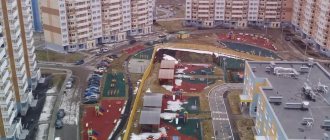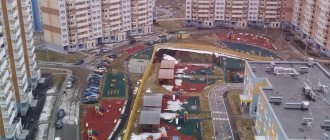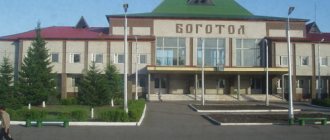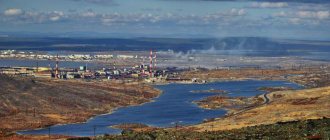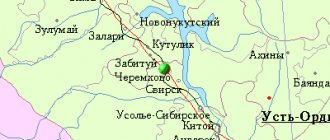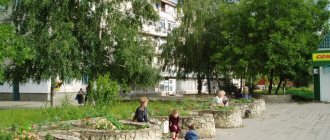About half the way from Vologda to Veliky Ustyug is the city of Totma, in the past it was the first center of deep salt production in Russia, then it was the starting point in the development of Siberia and Russian America, but now it is a nice, quiet province. For almost ten thousand residents there are: two Pyaterochka, three Magnit, four libraries and as many as five state museums. It turns out that the concentration of the latter here, based on the population, is almost ten times greater than in St. Petersburg.
Totma is often called the city of sailors, the birthplace of the “domestic Columbus”, and the “land sea port”, and the Russian Nuremberg. But all these epithets are about the glorious past. And what this city has in the present is its individuality. Fabulous and ancient, it is at least ten years older than Moscow. But his nature is not at all Moscow, and not Novgorod, and not even Vologda, but original - Totem. Totma is a city with a face. Just imagine: smoke from the burning stoves hangs in the frosty air, a ringing silence hangs over the wooden pavements, and only from somewhere around the corner comes a characteristic voice - old women, as if stepped from the pages of an old book, creaking their felt boots on the purest snow so that Rinse freshly washed laundry in an ice hole. And Totma is the only place in Russia where, regardless of the political picture of the world, the hashtag #Californiaours is always relevant.
Totma is located on the banks of the Sukhona River.
According to a widespread legend, the name of the city is associated with Peter I. On his first visit here, he said: “It’s not a city, it’s darkness.” In fact, the toponym Totma is Finno-Ugric. It was formed from two words: “tod” - a damp place overgrown with bushes and fir trees, and “ma” - earth. As in most toponyms of the Russian North, the emphasis in the name of the city is on the first syllable.
Totma is part of the Association of the Most Beautiful Villages of Russia. The attentive reader will immediately notice: Totma is not a village, but a city! Right. With the same rights, for example, Suzdal was included in this association, which, as you know, is also never a village. Therefore, the association has recently been renamed, now it is called “The Most Beautiful Villages and Towns of Russia.” Everyone is happy.
Everything that has to do with Totma is called not “Totma”, but “Totma”.
Learn about land sailors
The location of this museum defies all laws of logic. Firstly, the city of Totma is hundreds of kilometers from the sea, and even thousands from the Pacific Ocean! Secondly, inside the magnificent Church of the Entrance to Jerusalem, which rises in the center of Totma, you expect to see anything but an exhibition with a huge globe, sailing ships and ancient portraits of naval commanders. Nevertheless, the “Museum of Sailors” was located here, in the Totem temple, for many years. In 2022, the museum will move to the complex of the estate of merchant Fyodor Kholodilov on Kuskov Embankment. I haven’t moved yet, but in any case, no matter where it is based, you should definitely visit it!
The museum has three thematic complexes. The first is dedicated to the history of the Russian fleet, the second tells about the history of Totmich navigation, the third represents the twentieth century, the Totmich people who served in the fleet, and the “School of Travelers of Fyodor Konyukhov.”
What is this mysterious “Totem navigation”? The answer is suggested by the city's coat of arms - a black fox on a golden field. In the 18th century, Totem merchants equipped about twenty expeditions to the Aleutian Islands and Alaska to bring precious fur to Russia - black fox fur, which is found only in America. At the same time, sailors made many geographical discoveries, and many interesting things happened to travelers... Come to the museum and find out!
Layout of Totma
In 1780, Totma became a district town and received a “regular” plan. The center of the old part of the city remained Predtechenskaya Square, from which five streets radiated. The shopping area retained its role as an administrative and commercial center. The newly built areas were divided into 50 rectangular blocks. Five straight streets ran parallel down to the Sukhona, and five others ran from west to east. This Catherine's layout has generally been preserved to this day. It is not disturbed by either the abundance of industrial buildings or modern multi-storey buildings.
See six hundred spinning wheels in four rows
totmamuz.ru
A room with a high ceiling. There are four rows of shelving along the wall. And on these racks, tightly packed together, right up to the ceiling, there are spinning wheels. Bright, with intricate designs, each is a real work of art! There are many, many, many of them! And in other halls, on other shelves - wooden ladles and scutcheons, birch bark tues and bast shoes, weaving mills and sleds on runners, painted peasant sideboards and printed boards for fabrics, chests, ceramics, tiles - and a myriad of everything! Anyone who is at least a little interested in ethnography, old man, will “hang” here for several hours. “Open storage of funds” is a unique place! Find it on the territory of the Spaso-Sumorin Monastery on the outskirts of Totma! And look at the monastery itself from the mid-16th century. In the upper church of the Ascension Cathedral there is a unique complex of fresco paintings by academician of painting Platon Tyurin.
Meet the national hero of the Indians
totmamuz.ru
The House-Museum of Ivan Kuskov is the first museum of Russian America in our country. Totemsky tradesman Ivan Aleksandrovich Kuskov at the end of the 18th - beginning of the 19th century sailed on Russian ships in the Pacific Ocean, risked his life, made geographical discoveries and hunted fur-bearing animals. It was he who founded the famous Ross Fortress (now Fort Ross) on the California coast, and it was he who developed the Russian-American Company. He is still remembered and revered in America. In some Indian tribes, Kuskov is still recognized as a national hero. It's hard to believe, but the Indians came to Totma several times! They brought gifts! They can be seen in the Kuskov house-museum. The guides will introduce you to the amazing fate of the Russian sailor, show you letters, documents, portraits and antiques... And if you are lucky enough to be in Totma in August, you will become a participant in the holiday - “Russian America Day”. There will be something to tell!
Economy
Industry
The most important industry in Totma is the food industry.[13]
Transport
Paved roads connect Totma with Vologda via Kadnikov (southwest), Veliky Ustyug via Nyuksenitsa (northeast) and Nikolsk via Imeni Babushkina (East). Before the road between Totma and Veliky Ustyug along the Sukhona was completed in the first decade of the 2000s, the only communication between the cities was through Nikolsk.
The Sukhona is navigable in Totma; however, there is no passenger navigation.
Admire the paintings of Repin's student
Totma is very beautiful. Its surroundings - the banks of the Sukhona, hills and forests, pine and birch trees - are beautiful at all times of the year. Feodosius Mikhailovich Vakhrushov - a native of Totma, a student at the Academy of Arts, local historian, researcher and collector of folk art, founder of the collection of the Totma Museum of Local Lore - painted landscapes mainly here in the Russian North. His paintings are exhibited in Vologda and Kharkov, Krasnodar and Nizhny Novgorod. And more than two hundred paintings are kept in the Totma Museum of Local Lore. An entire department here is dedicated to the artist’s work—a kind of art museum within a museum.
Sketch of the temple, watercolor. Totem Museum
At the beginning of the 20th century, Feodosius Mikhailovich traveled a lot along the Kokshenga River, collecting objects of folk life and decorative and applied art, which later became the basis of the exhibition of the local history museum, and along the way he wrote etudes, sketches, and noted architectural monuments. Vakhrushov saved the values of the Spaso-Sumorin Monastery in the difficult year of 1919 and did many more good deeds for the city.
In Totma, Vakhrushov is remembered: a monument to the artist was erected, and there is a memorial plaque on the house where he lived for seventeen years. Quite recently, in the center of the pedestrian zone near the artist’s house, a platform with benches and information stands was created, dedicated to the outstanding Totem dynasty of the Dilaktorskys, associated with Vakhrushov. In the village of Varnitsa not far from Totma there is F. M. Vakhrushova Street.
Recommendations
Notes
- ^ a b c d f
Permit No. 178 - ^ a b c
Law No. 371-OZ - ^ a b c d f g gram hour i j k Encyclopedia of Russian Cities
. Moscow: Great Russian Encyclopedia. 2003. p. 475. ISBN 5-7107-7399-9. - ^ a b c d e
N. V. Soldatova (2006). G. V. Sudakov (ed.). Vologda Encyclopedia (PDF) (in Russian). Vologda: VSPU, Rus. item 474. ISBN 5-87822-305-8. Retrieved November 26, 2013. - ^ a b
Federal State Statistics Service of Russia (2011).
“All-Russian Population Census 2010. Volume 1" [All-Russian Population Census 2010, vol. 1]. All-Russian Population Census 2010 [All-Russian Population Census 2010]
(in Russian). Federal State Statistics Service. - "26. The size of the permanent population of the Russian Federation by municipalities as of January 1, 2022.” Federal State Statistics Service. Retrieved January 23, 2022.
- ^ a b c d f
Law No. 1124-OZ - "On the calculation of time." Official Internet portal of legal information
(in Russian). June 3, 2011. Retrieved January 19, 2022. - Post office. Information and computing center of OASU RPO. ( Post office
).
Search for postal facilities ( Search for postal facilities
) (in Russian) - Federal State Statistics Service of Russia (May 21, 2004). “The population of Russia, the constituent entities of the Russian Federation as part of federal districts, urban settlements, urban settlements, settlements, settlements of 3 thousand or more people.” [Population of Russia, its federal districts, federal subjects, districts, urban settlements, rural settlements - administrative centers, rural settlements with a population of more than 3000 people] (XLS). All-Russian Population Census of 2002 [All-Russian Population Census of 2002]
(in Russian). - “All-Union Population Census of 1989. The actual population of the union and autonomous republics, autonomous regions and districts, territories, regions, urban settlements and villages. Rossiyskaya Gazeta”, No. 219, September 29, 2010.. (Ministry of Culture of the Russian Federation. Order No. 418/ 339 of July 29, 2010. On approval of the register of historical settlements
. Valid from October 10, 2010). - Museums of Totma (in Russian). Russian Network of Cultural Heritage. Retrieved November 26, 2013.
Sources
- Legislative Assembly of the Vologda Region. Law No. 371-OZ of June 4, 1999 “On the decision of the administrative-territorial Vologda region,” as amended. Law No. 2916-OZ of December 7, 2012 “On Amendments to the Law of the Region” On Issues of the Administrative-Territorial Structure of the Vologda Region “”. Came into force on the date of official publication. Published: “Red North”, No. 124–125, July 29, 1999 (Legislative Assembly of the Vologda Region. Law No. 371-OZ of June 4, 1999. On issues of the administrative-territorial structure of the Vologda Region
As amended by the Law of 12/07/2012 No. 2916-OZ.
On amendments to the regional law "On issues of the administrative-territorial structure of the Vologda region"
. Valid from the date of official publication.). - Government of the Vologda region. Resolution No. 178 of March 1, 2010 “On approval of the register of administrative-territorial units of the Vologda region,” as amended. Resolution No. 686 of June 25, 2012 “On amendments to some Resolutions of the Regional Government.” Entered into force on March 20, 2010. Published: “Red North”, No. 29, March 20, 2010 (Government of the Vologda Region. Resolution No. 178 of March 1, 2010. On approval of the Register of administrative-territorial units of the Vologda Region
As amended by Resolution No. 686 of June 25, 2012.
On amendments to various resolutions of the Regional Government
. Effective from March 20, 2010). - Legislative Assembly of the Vologda Region. Law No. 1124-OZ of December 6, 2004 “On establishing the boundaries of the Totemsky municipal district, the boundaries and status of the municipalities included in its composition,” as amended. Law No. 3670-OZ of June 1, 2015 “On the transformation of some municipalities of the Totemsky municipal district, on amendments to the establishment of the boundaries of the Totemsky municipal district, the status of the municipalities included in its composition” and changes to the Appendix to the Law of the region "On some issues of the organization and activities of local government in the Vologda region "". Came into force 10 days from the date of official publication. Published: “Red North”, No. 242, December 11, 2004 (Legislative Assembly of the Vologda Region. Law No. 1124-OZ of December 6, 2004 On establishing the boundaries of the Totemsky municipal district, on the boundaries and status of its constituent municipalities
V version of the Law dated 01.06.2015 No. 3670-OZ.
On the transformation of several municipalities in the Totemsky municipal district, on amendments to the Law of the region “On establishing the boundaries of the Totemsky municipal district, on the boundaries and status of its constituent municipalities” and on introducing amendments in the Appendix to the Regional Law "On various issues of the organization and functioning of local government in the Vologda Region"
. Valid after 10 days from the date of official publication.).
Decipher cartouches
In the 18th century, nautical maps were decorated with cartouches. Cartouches, or stamps, are scrolls with curlicues, inside which were placed coats of arms, inscriptions, map legends... And Totem architects, whose customers were Totem merchant seafarers, made cartouches elements of the decor of temples. In this way, the sailors paid tribute to the memory of their comrades who did not return from long-distance trading expeditions across the Pacific Ocean. And the marks, of which about fifty types are known, and exquisite ornaments on the facades of temples, made of bricks protruding by a third, became a distinctive feature of a special architectural style - Totem Baroque.
Flowers and shells, crosses and stars - you can look for them at churches while walking around Totma, look at them, decipher them, and just admire them. Temples-sailboats, temples-ships, temples-monuments to Russian travelers - in such a concentrated form you will not see such unique architecture anywhere else in the world.
Climb the elk rock
Photo by Sergei Lukyanov
Pink-gray granite of glacial origin, protruding two meters above the water. Dimensions 8x4 m. During floods, the Sukhona rises and hides it completely, but the rest of the time it flaunts in the river bed, one hundred meters from the right bank, two hundred from the left. It is called differently: Elk-stone or Tsar’s table. A legend is told in connection with the second name. Tsar Peter went to the Russian North. He drove and drove, got hungry, for some reason climbed onto the Elk Stone and asked for tea. And he himself: “How dark it is here!” This is where it supposedly came from - Totma... In fact, the city was founded at least five centuries earlier than Tsar Peter. But this didn’t make Elk-Stone any worse. It is beautiful, unusual, the depression on its surface is compared to the imprint of a moose's hoof, and it is a miracle that it survived at all - in the thirties of the twentieth century they wanted to blow it up so as not to interfere with shipping. They didn’t blow up, to our delight, so we’ll take a boat to Tsar-Kamni and take a photo on it.
Monument to Nikolai Rubtsov
It is no coincidence that the first of all erected monuments to the outstanding poet N. Rubtsov was installed here, on the high bank of the Sukhona, near the former pier, where the amazing, leisurely, modest and simple in its beauty nature of the Russian north opens up not only to the eye, but also to the soul.
The author of the sculpture monument is V.M. Klykov captured the pensive lyric poet sitting on a bench. On a stone pedestal, a line from one of N. Rubtsov’s poems is immortalized for posterity: “For all good we will pay with good, For all love we will pay with love...”
Wander around “my quiet homeland...”
Photo by Igor Godunov
“It’s light in my upper room. This is from the night star. Mother will take a bucket and silently bring water..."
Nikolay Rubtsov. Of course, we remember and love his poems. Rubtsov lived near Totma in the village of Nikolskoye and was brought up in an orphanage. Yes, the poet is an “orphanage”. Here Nikolai completed his seven-year school, in Totma he studied at the forestry technical school for two years, and then returned to these places many times and stayed for a long time. “...Here it’s easier for me to breathe, it’s easier to write, it’s easier to walk on the ground.” In Totma there is a monument to the poet and his museum. But it’s more interesting to visit “Nikola” - the village of Nikolskoye on the banks of Tolshma, in the village museum of Rubtsov. There is also a memorial room for the poet and authentic objects related to his life. They will tell you about how the orphans survived in the orphanage, who Nikolai was friends with, and how he wrote his first poems. You will learn about the history of the village of Nikolskoye and how the museum itself was created. There is an interesting ethnographic exhibition - “In the Footsteps of Past Times”. The Church of St. Nicholas the Wonderworker is being restored in Nikolskoye. Just walking around the beautiful village and admiring the northern landscapes is such a pleasure!
Hyperborea
Totma, according to some historians, is the ancestral home of the ancient Aryans
Recently, ideas have become increasingly popular that it was the middle Prisukhonye region that became the homeland of the mysterious Aryans, who later moved to Hindustan and became the creators of an outstanding civilization that lasted for many centuries. In the works of the ethnographer S.V. Zharnikova, this is also scientifically substantiated - everyone can read it. There are, of course, more skeptics, and their objections also seem to be quite justified, so it’s probably impossible to immediately take this amazing hypothesis on faith. However, each of us has the right to get acquainted with the point of view of both supporters and opponents of the “Aryan hypothesis”, and form our own opinion. You can visually get acquainted with the pre-Christian history of the region, for example, at the Utyug stone, which once served as a pagan sanctuary.
Meet the lizard beasts
cultinfo.ru
Twenty-four halls... You can get lost! And in these halls there is so much! The first exhibits of the Totemsky Museum of Local Lore back in 1915–1917 were the “Plan of the city of Totma 1781”, an old wooden table with carved decorations, an old brass hydrometer for determining the density of a salt solution, two portraits made with oil paints at the beginning of the 19th century. And now here are figures of lizards of the Permian period, and bones of fossils, and the dwelling of primitive people, and stuffed animals living in the northern forests... There is a hall completely dedicated to salt, salt making, there, for example, there is a piece of a pipe on display, through which the brine solution was raised from salt springs. On the Totem lands, salt was a vital product - it was mined and traded throughout the country. The hall of the Petrovskaya Craft School will be interesting for children. There are toys: wooden soldiers, carts drawn by wooden horses... Very entertaining and original! There is a hall of the twentieth century in the history of Totma. Hall of flora and fauna. And a large exhibition of paintings by the Totem artist Feodosius Vakhrushov. Dedicate at least half a day to the local history museum in your travel itinerary!
Peer into the dark faces
temples.ru
The Assumption Church stands on the left bank of the Sukhona where the Dmitrievsky Stream flows into it. There is a museum of church antiquities in the church. From the name you can understand what is on display: dark northern icons (the earliest - the end of the 15th century), church utensils, wooden and copper items and... a lot of sculptures! Wooden temple sculpture is not typical for Orthodoxy, but it is found in the Russian North. The sculptures were carved from linden, which is pliable and can withstand temperature changes, primed with a mixture of chalk and glue, covered with ocher and overlaid with sheets of gold leaf. Recently, the museum even opened a special exhibition hall, which is called “Wooden Sculpture”. Be sure to visit there.
Various exhibitions are held on the second and third floors of the museum.
You can go up to the observation deck of the bell tower - the view of Totma and Sukhona opens up magnificent!
The atmosphere of the authentic Russian North
Houses here, in the northern style, refrain from carvings, but openwork chimneys and figured drain pipes are in a wide range. As well as wooden sidewalks - “bridges”, slowly replaced by paving slabs, as well as rafts for rinsing clothes with wooden hangers. The city's terrain is unique, and bridges with wrought-iron fences and stairs will often appear in front of you. It’s especially great to feel this atmosphere on a summer morning, in sunny weather, walking along the Sukhona embankment - boats and buoys on the river, the cries of seagulls, calmly walking cats, silence and complete serenity. If you are looking for a break from the city noise and at the same time genuine, not popular provincialism, not spoiled by numerous tourists, Totma is the best choice.
25 opportunities that tourists visiting Totma should not miss
Season the journey with salt
totmamuz.ru
Want to know everything about salt mining? Go to EntreSOL. This is an interactive platform in the museum and exhibition hall, where exhibitions often change, all sorts of presentations, seminars, meetings are held, artists, craftsmen, craftsmen are exhibited... The museum of the Folk Culture Center "Moroshka" will be interesting for children - here you can touch all the antiques and use all the exhibits .
And the salt is on the second floor. EntreSOL is not even a museum, but a creative space. In niches and on stands there are texts telling about salt making, salt lamps shine with a soft, useful light, there is Wi-Fi, you can sit in a comfortable chair or walk around the room, you can get acquainted, communicate, you can touch everything and even lie down! Young people are at ease here. And adults will find something to do.
